Pimples, blackheads, and red bumps — the primary symptoms of acne vulgaris — affect more than 85% of adolescents and ~50% of people over 25. In fact, so many of us have acne that it is now the most common skin condition of western civilization.
Fortunately, recent research suggests that acne doesn’t have to be so prevalent. Simple dietary interventions may be all we need to halt acne progression and reduce the number of acne eruptions.
But is it possible to treat acne with a keto diet? To get a deeper understanding of how this might work, let’s look beneath the surface of the skin and into the following keto acne topics:
- Why is this skin condition so common?
- The progression of acne formation
- Dietary factors and acne: high-GI carbohydrates, insulin, and blood sugar levels
- The impact of different carbohydrate sources on acne eruptions
- Treating acne with diet
- Keto & acne: Is it the best option?
- What about dairy and acne?
- Keto diet acne eruptions: What to do
- Other skin health tips
- FAQs about Keto, acne, keto rash, and ketosis
- Key takeaways
Why is Acne so Common?
Genetics can strongly influence a patient’s risk of developing acne, but acne-causing genes cannot explain the current acne epidemic. Epidemiological studies suggest that diet has the biggest impact on the severity and prevalence of acne — more so than cleanliness, smoking, and stress (which all have been found to have little to no association with acne).
More specifically, the western diet seems to be the primary instigator of the current acne epidemic in western societies. When we look at the data from other non-westernized cultures — such as the Inuit, Okinawan Islanders, Ache hunter-gatherers, and Kitavan Islanders — acne is a rarity.
However, this epidemiological evidence is not enough to draw the conclusion that the western diet causes acne — it doesn’t even provide us with enough evidence to assert that any diet can increase the risk of acne. Only when we look at the physiological mechanisms behind the creation of pimples, blackheads, and red bumps will we be able to figure out if diet can play a role in the development of acne.
How Acne is Formed: Four Factors Behind Acne Progression
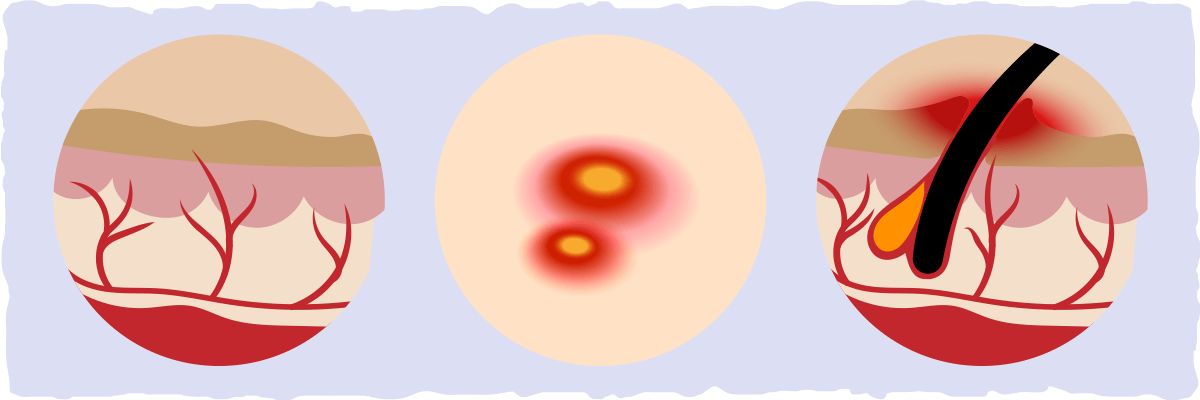
Whiteheads, blackheads, and red bumps are formed when a combination of the following factors is present in the skin:
- Increased reproduction of skin cells within the ducts that carry oily lubrication to the skin and hair.
- Abnormal shedding of the skin cells around the hair follicles.
- Excess sebum production by the sebaceous glands. (Sebum is the oily, waxy substance that waterproofs and lubricates the skin and hair.)
- Colonization of the uppermost layer of the skin (stratum corneum) by a bacterium called Propionibacterium acnes (p. acnes), resulting in inflammation (red bumps).
As a result of these four factors, dead skin cells will stick together with the help of the excess sebum. This will block the pore of the hair follicles, forming a microcomedone (a clogged skin pore).
If the microcomedone is closer to the skin, then the skin pigment called melanin will be oxidized by the air, resulting in a dark appearance (known as a blackhead). In contrast, a whitehead is formed when the microcomedone occurs deep within the hair follicle.
Both whiteheads and blackheads (in their early and late stages) provide an ideal environment for P. acnes to proliferate and cause oxidative stress. This triggers a skin inflammation response that leads to redness, tenderness, and swelling.
The four factors that drive this skin condition are mediated in large part by insulin and other hormones that are impacted by insulin, such as testosterone, dihydrotestosterone (DHT), and dehydroepiandrosterone (DHEA), growth hormone (GH), and insulin-like growth factor 1 (IGF-1). For example, DHT and DHEA seem to be the main culprits behind increasing oily sebum production from the sebaceous glands, while GH and IGF-1 appear to trigger the overproduction of the specific skin cells that can clog our pores.
Acne From a Broader Perspective
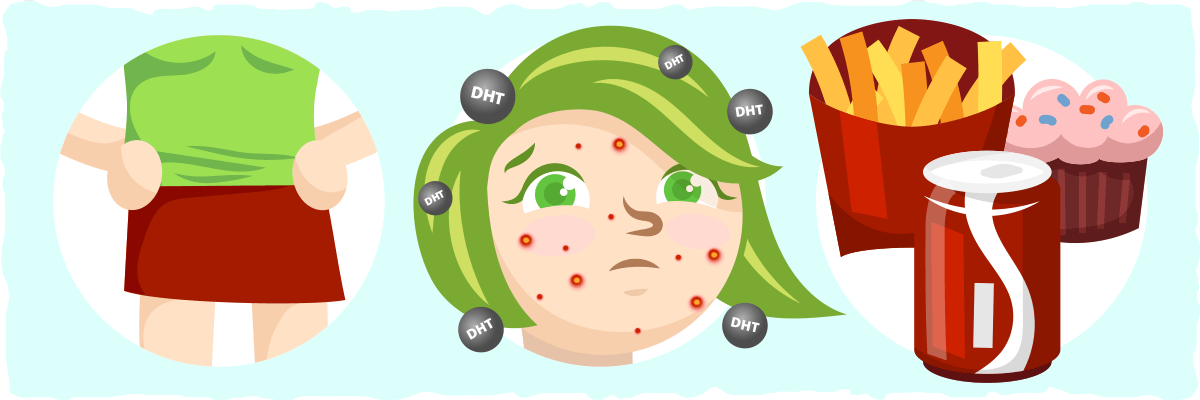
A helpful example of how impactful these hormones are on skin health can be found when we look at particular medical conditions that result from an imbalance of sex hormones. Polycystic ovary syndrome (PCOS), for example, typically is caused by unhealthy increases in androgens like DHT in women. As a result, many women with PCOS also have acne. Conversely, people who lack androgens or are insensitive to the effects of androgens rarely have acne. This is why people who have androgen insensitivity syndrome never develop acne.
A more common example of how closely linked hormonal levels are to acne prevalence can be found in teenagers. Puberty induces rapid increases in many of the hormones we mentioned above. This results in rapid growth and sexual maturation with the unfortunate side effect of acne (for most adolescents).
However, genetics and puberty are not the only contributing factors to acne formation — especially when you consider the fact that more people have acne in westernized societies than ever before.
When we combine the data from population-based studies comparing the incidence of acne in westernized and non-westernized societies with the physiological mechanisms of acne, an intriguing pattern emerges.
Earlier I mentioned how insulin and other hormones that are influenced by insulin instigate the chaos in the skin that leads to acne. Well, one of the most significant differences between non-westernized societies and westernized societies is the degree to which their diets stimulate insulin release.
People who live in non-westernized societies tend to eat more whole foods that don’t require high insulin levels to maintain homeostasis, while people in westernized societies eat much more processed food that causes a rapid increase in blood sugar. As a result of the western diet, the pancreas continuously releases insulin to keep blood sugar from getting too high. The chronically elevated insulin levels will then cause many hormonal imbalances that will disrupt the homeostasis of the skin and cause much more acne.
To state it more simply, a diet that primarily consists of high-glycemic index foods can cause acne.
Yet, this is purely a contention held by many researchers. To find out if this is what really occurs in humans, we need some high-quality scientific evidence from clinical trials.
High Glycemic Load Diet vs. Low Glycemic Load Diet In The Treatment of Acne Vulgaris
To our knowledge, there is one study that explored the therapeutic effects of a specific dietary intervention on acne. In this study, a total of 43 male patients with acne who were between the ages of 15 and 25 completed either a 12-week high glycemic load diet or a 12-week low glycemic load diet.
At 12 weeks, the average number of lesions in the low glycemic load diet group fell by 51% — nearly twice the reduction that was found in the high glycemic load diet. The researchers provided photos of the results experienced by the low glycemic load diet group.
On top of having better skin health, the subjects in the low glycemic load diet group lost weight and improved their insulin sensitivity compared to the high glycemic load diet group.
These are pretty astounding results, especially when you consider what the researchers defined as a low glycemic load diet. Here is a direct quote from the study:
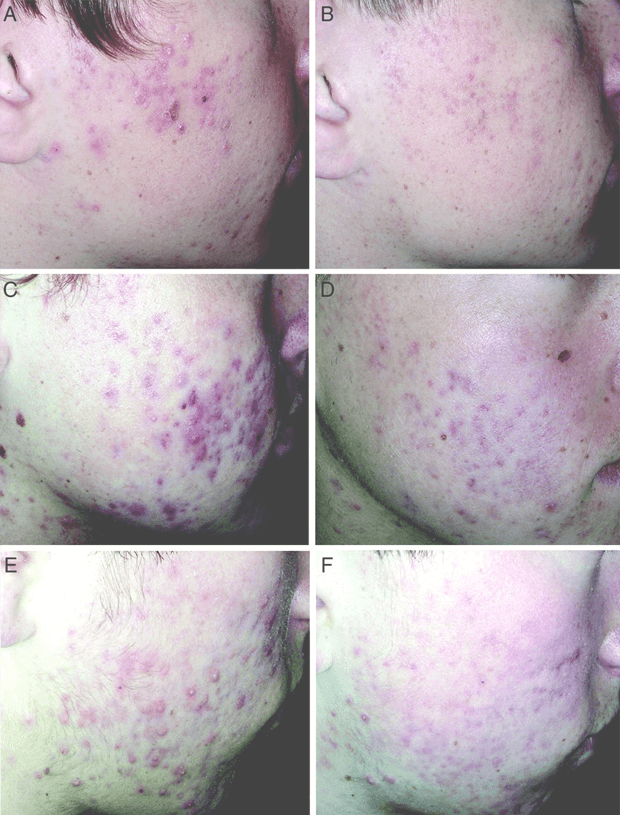
The LGL [low glycemic load] group was instructed to substitute high-GI foods with foods higher in protein (e.g., lean meat, poultry, or fish) or with foods with a lower GI (e.g., whole-grain bread, pasta, and fruit). Some staple foods were supplied, and the participants were urged to consume these or similar foods daily. The recommended LGL diet consisted of 25% of energy from protein, 45% from low-GI carbohydrates, and 30% energy from fats.
Although the researchers improved the quality of their diet, the subjects still ate plenty of carbs and moderate to high GI foods.
What would have happened if they ate 5-10% of their calories from carbs instead? Unfortunately, there are no other research studies that can provide us with a conclusive answer.
However, we can make a couple reasonable assumptions from this data:
- Insulin levels are related to the number of acne lesions.
- Eat more whole foods and the severity of acne will be reduced
- Diet definitely plays a role in the incidence and severity of acne in western populations.
With that being said, many questions still remain unanswered. Here are some that come to mind for me:
- Are insulin levels and acne severity so strongly linked that a decrease in insulin levels will cause a decrease acne lesion count?
- Will a low glycemic load diet have the same affect on women with acne?
What to Make of The Current Data: Treating Acne With Diet
At the end of the study about how low and high glycemic load diets affect acne, the researchers discuss how increasing insulin sensitivity plays a vital role in reducing the severity of acne.
They suggest that losing weight and eating more satiating, low-GI foods like meat and low-carb vegetables will create favorable changes in the body that improve skin health.
The researchers also explore the implications that the data has for women by relating acne to PCOS. Both PCOS and acne can be caused by chronically high insulin levels. In fact, women with PCOS typically have acne and some degree of insulin resistance (the opposite of insulin sensitivity).
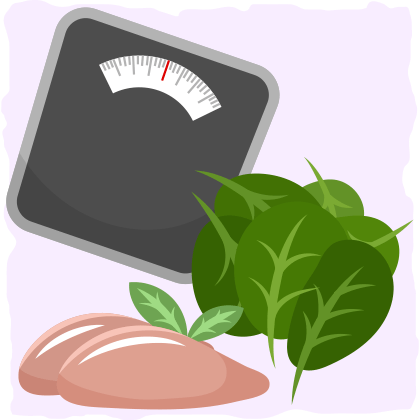
Research on using diet to treat PCOS is a bit further along then acne research albeit not by much. We dig deeper into the research on PCOS in this article where we find that the lowest of the low carb diets — the ketogenic diet — may be the best diet for reversing PCOS.
Although there is not enough data to conclude that the ketogenic diet is the best diet for treating acne, many researchers suggest that the current evidence points to carb restriction as being the optimal option for men and women.
The Ketogenic Diet May Be The Best Diet for Acne
In a 2012 article, a group of Italian researchers looked at the potential benefits of ketogenic diets for acne. They found that keto is able to treat acne in three ways:
- By reducing insulin levels. Ketogenic diets decrease insulin levels, often dramatically. For more on how the ketogenic diet does this, check out our article on the topic.
- By calming inflammation. Inflammation is what makes acne so red, sore, and tender. Low-carb and ketogenic diets have been shown to reduce inflammation.
- By decreasing IGF-1 levels. Restricting carbs helps keep IGF-1 levels low. This will help regulate sebum production and prevent pores from getting clogged.
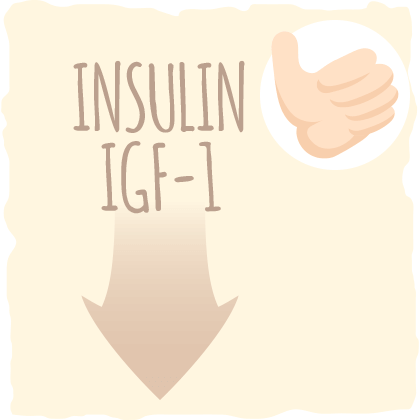
To a smaller extent, these three things are what helped improve the skin health of the subjects who followed the low glycemic load diet. Their insulin and IGF-1 levels decreased and, when you look at their progress pictures, you can see that their inflammation levels were reduced as well. Based on these results, it is highly likely that ketogenic diets would have helped them get even better results.
If you do a quick google search for “keto and acne” or “keto and skin health,” you will find plenty of anecdotal evidence that suggests that the ketogenic diet is ideal for skin health. I’ve heard many stories of people who followed keto to lose weight and noticed their skin clear up completely.
However, this isn’t what everyone on keto will experience. I’ve also read many stories of people going on keto and finding more pimples, blackheads, and red bumps than ever before. This means that carbs may not be the only acne-causing culprit.
The Link Between Acne and Dairy
Insulin and basal IGF-I plasma levels are major players when it comes to acne, and processed carbs aren’t the only thing that increases IGF-1 and insulin substantially. Dairy products — processed milk and whey protein-based products in particular — stimulate higher insulin and IGF-1 levels as well.
Although there are no clinical trials on the impact of milk consumption on acne, three large population-based studies reported a positive association between milk intake and acne.
Some authors have reported that the hormones in milk (designed to help the calves grow into massive animals) may survive milk processing and stimulate the many processes that lead to acne production. The whey protein in many dairy products can also create a potent insulin response that may further exacerbate any acne issues.
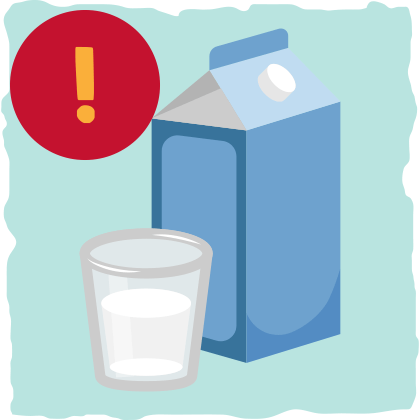
Is Your Acne Getting Worse on Keto?
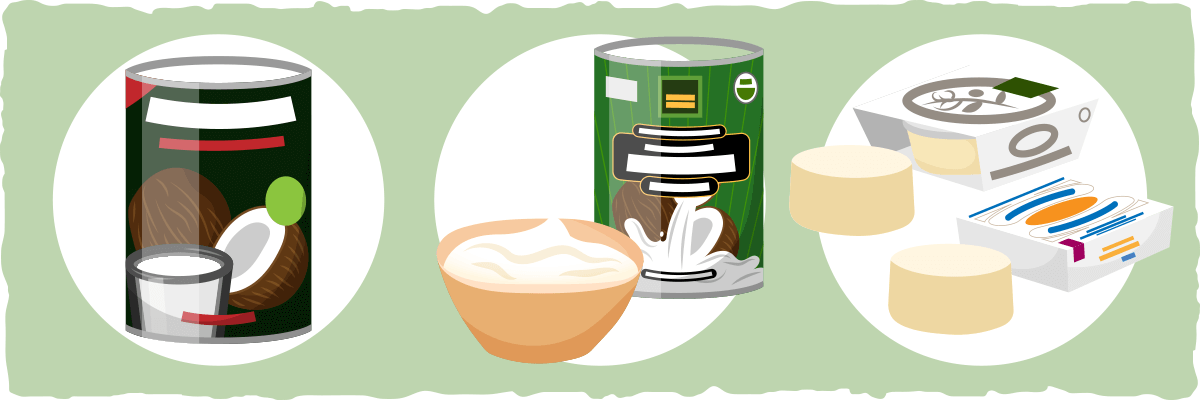
When you consider the fact that a staple of many ketogenic diets is high-fat dairy, it makes sense that some (but not all) people can experience an increase in acne while they restrict carbs. If you find that the ketogenic diet is having a negative impact on your acne, then consider decreasing your consumption of dairy products and whey protein powders.
Common keto-friendly dairy products like high-fat yogurt and heavy cream will contain some of the hormones and whey protein that can stimulate acne production. Foods like cheese and butter may have the smallest impact on skin health, but they may still contain some active hormones from the milk that was used to make them.
To reduce your dairy consumption, use these dairy-alternatives instead:
- Replace milk with coconut milk. In recipes, you can substitute coconut milk in for regular milk in a 1 to 1 ratio.
- Replace heavy cream with coconut cream. You may have to blend in a bit of water or skim some water out of the container depending on the creaminess of the coconut cream.
- Replace dairy-based cheese with vegan cheese. There are plenty of dairy-free cheeses on the market right now. My personal favorite dairy-free cheese-making companies are Treeline and Miyoko’s Kitchen. Their cheeses are some of the best I’ve ever tasted. In fact, many people think that they are better than traditional dairy-based cheese. If Treeline or Miyoko’s Kitchen doesn’t have the cheese you are looking for, then try Follow Your Heart’s vegan cheese. Follow Your Heart is another company that makes almost every type of dairy-free cheese you could ever want.
For a more comprehensive list of dairy alternatives, click here.
If your acne is getting worse after starting keto, then I recommend replacing most of your milk, half and half, heavy cream, and yogurt with dairy alternatives for at least a month. Take before and after pictures of your acne problem areas to see if limiting your dairy intake helped.
Other Ways to Improve Skin Health And Reduce Acne
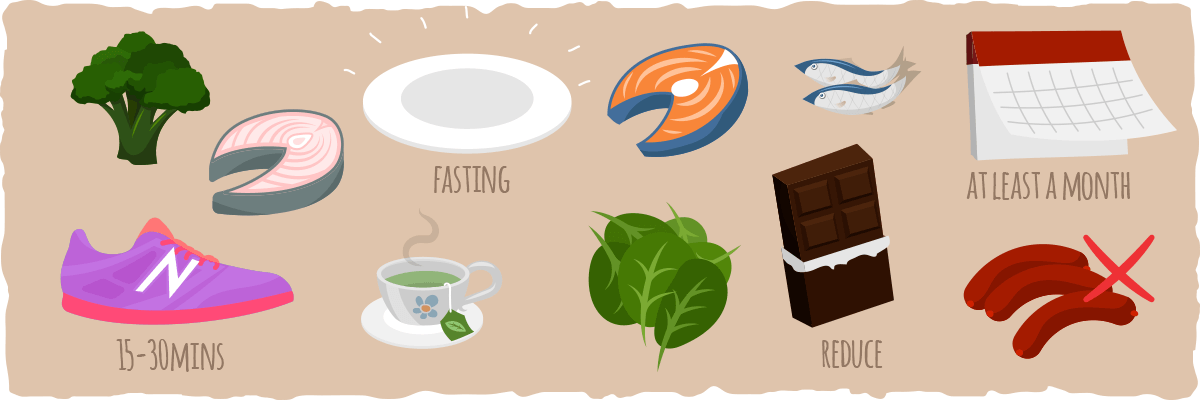
Altogether, limiting your carb and dairy intake should have a massive impact on your skin health. If this approach isn’t helping after a few weeks, then try some of these suggestions:
- Consume fatty fish a couple of times a week. Long-chain omega-3 fatty acids found in fish are anti-inflammatory and may improve skin health. The best sources of these healthy fats include wild-caught salmon, mackerel, sardines, herring, and anchovies.
- Eat low-carb vegetables with every meal. Leafy green and cruciferous vegetables may help promote hormonal regulation and improve skin health. To learn more about the low-carb veggies that you should eat on keto, check out this article.
- Drink green tea. Green tea is the best source of the antioxidant EGCG (Epigallocatechin gallate). A 2016 study found that green tea extract significantly reduced acne lesions in adult women with moderate to severe acne.
- Limit dark chocolate consumption. A 2016 study found that even sugar-free 99% dark chocolate might significantly worsen breakouts in acne-prone men. For this reason, you may want to limit dark chocolate intake.
- Eat mostly whole, minimally-processed foods. Even if you don’t eat sugary and starchy foods, you may still be consuming ingredients that can cause skin issues. Bologna and other processed meats often contain sugar, corn syrup, fillers or other additives that raise insulin and inflammation levels. Stick to whole food whenever possible.
- Limit alcohol intake. Alcohol is toxic to the body, so the liver’s top priority is to detoxify it immediately upon consumption. This causes a cascade of effects throughout the body that impairs hormonal balance, impacts sebum production, and increases the likelihood of acne eruptions.
- Follow the keto diet for at least a month. It took almost three months for the subjects in the low glycemic load diet group to experience an average of 50% reduction in acne. It may take you just as long to clear up your skin, so stick to the diet for at least a month before reassessing your skin health.
- Exercise daily. Consider adding a 15-30 min walk to your daily schedule. This will increase your insulin sensitivity and reduce the severity of your acne.
- Experiment with intermittent fasting. By restricting your calorie intake to an 8-hour eating window every day, you can decrease your insulin and IGF-1 levels more than you would by eating normally throughout the day. To learn more about this topic, check out our article on intermittent fasting.
FAQs about Keto Acne
Does keto diet cause acne breakouts?
One study found that high-fat diets may increase sebum production and acne. However, this was not a keto diet, and the original data didn’t control for energy intake.
Overall, the current research literature suggests that a well-formulated ketogenic diet is more likely to reduce acne eruptions.
That said, if you find keto worsens your acne, make sure to try the other recommendations in the “Other Ways to Improve Skin Health And Reduce Acne on Keto” section of this article.
How do you prevent acne on a keto diet?
Keto and low carb diets can naturally prevent acne by lowering carbohydrate intake and promoting weight loss. Overall, this decreases insulin and blood sugar levels, which prevents excess sebum production and improves skin health.
What does keto acne look like?
For some people, ketone production triggers a skin condition known as “keto rash”. It can be is very itchy and often starts on the back, chest, or stomach with red bumps (that look like small pimples).
This is the only true acne-like skin condition that keto can cause. It often goes away as the body adapts to ketosis (by producing more energy-boosting ketone bodies and less acetone.)
To learn more about keto rash and how to remedy it, read through our article on the topic.
Can keto help with hormonal acne?
Though hormones naturally fluctuate throughout our lives, the food we eat can have a profound impact on whether or not we develop hormonal acne eruptions. Current research suggests that heavily processed high-carb foods and excessive calorie intake trigger the mechanisms of acne formation.
By promoting everything from weight loss to insulin reduction to healthy food intake, the keto diet helps address many of the driving factors behind hormonal acne.
Should I use coconut oil for acne?
Coconut oil is high in lauric acid — a fatty acid that helps kill p. acnes bacteria and keeps them from causing acne breakouts.
However, if you already have oily skin, coconut oil might just clog pores and worsen skin health.
Putting it All Together — The Best Diet For Reversing Acne
The current evidence indicates that carbohydrate intake, specifically high-glycemic carb consumption, is more closely linked with the increasing incidence and severity of acne than any other factor that has been studied.
Although the evidence for the treatment of acne with diet is scarce, the data from population-based studies, the physiological causes of acne, and the results from one clinical trial indicate that limiting carb intake is the most promising dietary intervention for acne.
One of the best ways to do this is by following a ketogenic diet that primarily consists of low-carb vegetables and fresh meat/seafood. If the acne isn’t any better after restricting carbs for a month or so, then limiting dairy intake may help.
To improve skin health even further, try these recommendations as well:
- consume more fatty fish for their health-promoting omega 3 fatty acids
- drink green tea
- limit alcohol and dark chocolate consumption
- exercise daily
- experiment with intermittent fasting
Remember, these suggestions cannot replace the results that you will get from sticking to the keto diet.
Even if you experience a worsening of your acne during the first week of keto — which is often called a keto rash — it will typically clear up once your body adapts to carb restriction.
Sources
- The effect of a high-protein, low glycemic-load diet versus a conventional, high glycemic-load diet on biochemical parameters associated with acne vulgaris: a randomized, investigator-masked, controlled trial. — NCBI
- A low-glycemic-load diet improves symptoms in acne vulgaris patients: a randomized controlled trial — The American Journal of Clinical Nutrition
- Beyond weight loss: a review of the therapeutic uses of very-low-carbohydrate (ketogenic) diets — NCBI
- Should We Limit Sugar in Acne? — JAMA Dermatology
- Diet and Acne Update: Carbohydrates Emerge as the Main Culprit — Journal of Drugs in Dermatology
- Diet and acne: a review of the evidence — Wiley Online Library
- Inositol in women suffering from acne and PCOS: a randomized study — Open Access Text
- Correlation between serum levels of insulin-like growth factor 1, dehydroepiandrosterone sulfate, and dihydrotestosterone and acne lesion counts in adult women. — NCBI
- Nutrition and Acne: Therapeutic Potential of Ketogenic Diets — Karger
- Acne: Overview — PubMed Health
- Hormonal mechanisms in the onset of puberty — NCBI
- [Acne vulgaris: endocrine aspects]. — NCBI
- Insulin regulates testosterone and sex hormone-binding globulin concentrations in adult normal weight and obese men. — NCBI
- Dark chocolate exacerbates acne. — NCBI
- Effect of dietary supplementation with omega-3 fatty acid and gamma-linolenic acid on acne vulgaris: a randomised, double-blind, controlled trial. — NCBI
- Does supplementation with green tea extract improve acne in post-adolescent women? A randomized, double-blind, and placebo-controlled clinical trial. — NCBI
- [Acne and diet]. — NCBI
- Acne Vulgaris: A Disease of Western Civilization — JAMA Dermatology
- The skin function: a factor of anti-metabolic syndrome — Diabetes & Metabolic Syndrome
- Dietary Patterns Associated with Sebum Content, Skin Hydration and pH, and Their Sex-Dependent Differences in Healthy Korean Adults — NCBI